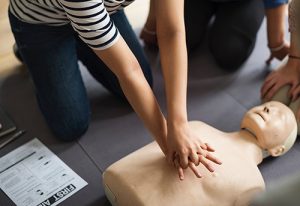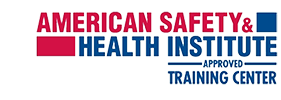While everyone has heard of cardiopulmonary resuscitation (CPR) and has a notion of what it is, and maybe even how to perform it, fewer people have heard of BLS or Basic Life Support. If you have heard of it, you may wonder how it differs from CPR.
In this post, we’ll discuss what CPR and BLS are, the differences between the two, and how to decide whether a CPR certification or BLS certification is right for you.
What is CPR?
 CPR is an emergency life-saving procedure performed on people whose hearts have stopped working. CPR as we know it was developed in 1960, but mouth-to-mouth resuscitation techniques date back centuries.
CPR is an emergency life-saving procedure performed on people whose hearts have stopped working. CPR as we know it was developed in 1960, but mouth-to-mouth resuscitation techniques date back centuries.
CPR involves blowing air into the victim’s mouth to keep oxygen moving throughout their body while doing chest compressions to help keep the heart beating until emergency services arrive. Performing CPR also increases the chances that the victim’s heart will respond to defibrillation, another life-saving measure.
Anyone can become certified in CPR and depending on your profession, certification may be advised or even required.
What is BLS?
Basic life support (BLS) includes CPR but is an overall higher level of medical care typically administered by public safety professionals, first responders, paramedics, healthcare providers, and qualified bystanders. BLS gives someone in respiratory distress or cardiac arrest life saving care until they get more advanced medical attention at a hospital. Sign up for our Basic Life Support classes for healthcare providers to build a foundation for saving lives after cardiac arrest!
BLS involves performing:
- An initial assessment
- Airway maintenance
- CPR
The average person doesn’t have the medical knowledge necessary to assess the person’s condition or do airway maintenance, which is why BLS is geared toward medical professionals or people with pre-existing medical knowledge.
What’s the Difference Between BLS and CPR Certification?
CPR is taught in BLS certification classes, but since BLS certification is intended for healthcare professionals, the class is more in-depth than traditional CPR training. A typical BLS class will cover single-rescuer and team basic life support skills, how to assess an emergency situation, precautions to take, and legal considerations when administering life saving care. You may also learn additional first-aid skills like wound and burn care or dealing with fractures and poisoning.
Not everyone needs to get certified in BLS since most of the time, CPR certification will be enough to provide lifesaving care in offices, schools, or other safe environments.
Which Certification Should I Get?
This depends on your reason for getting a certification. If you want to feel more prepared in emergencies, traditional CPR certification is a great idea. If your job requires a certification but didn’t specify what kind, ask which would be best. Most of the time, a CPR certification will meet job requirements. This is especially true for teachers, coaches, or daycare workers.
If you’re in the healthcare field, including dentistry, BLS certification is most appropriate. It will give you the skills you need to provide lifesaving treatment outside of a medical setting.
Note: it is NOT necessary to have CPR certification as a prerequisite.
Register for BLS or CPR Certification Classes in Raleigh
Whether you need to schedule training for an individual or your whole team, we offer classes online (CPR only) and in-person at our Raleigh facility. For groups of six or more, training can be scheduled at your place of business. To learn more or sign up for a class, call us at (919) 639-4848 or register online.



